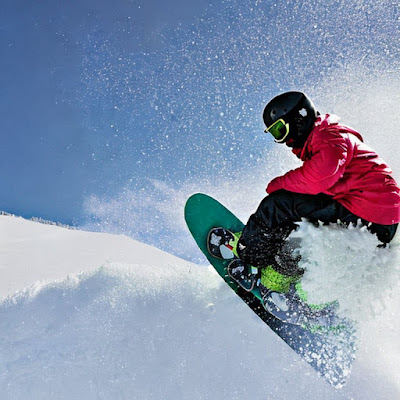![]() Snowboarding, as a recreational winter sport, has a relatively recent origin compared to other snow activities like skiing. Its development can be traced back to the mid-20th century, with several key milestones contributing to its emergence and evolution. Here is a detailed account of the origins of snowboarding:
Snowboarding, as a recreational winter sport, has a relatively recent origin compared to other snow activities like skiing. Its development can be traced back to the mid-20th century, with several key milestones contributing to its emergence and evolution. Here is a detailed account of the origins of snowboarding:
Early Inspiration and Influences:
- Surfing: Surfing played a significant role in inspiring the concept of snowboarding. In the 1920s and 1930s, surfers in places like Hawaii and California sought alternative ways to enjoy the sport during the winter months.
- Snurfing: In the 1960s, Sherman Poppen, an engineer from Michigan, created a toy called the "Snurfer" for his children. The Snurfer was essentially a single board with a rope attached to the front for stability, mimicking the experience of surfing on snow. It gained popularity as a backyard activity.
Sherman Poppen and the Snurfer:
- Poppen's Snurfer gained attention beyond his family when his wife, Nancy, decided to hold a Snurfer competition in 1968 in Muskegon, Michigan. The event attracted participants and sparked further interest in the Snurfer.
- The Snurfer's popularity led to production and distribution on a larger scale, making it widely available as a commercial product. This helped expose more people to the concept of standing sideways on a single board for sliding on snow.
Early Pioneers and Innovations:
- Dimitrije Milovich: In the 1970s, Dimitrije Milovich, a surfer from Michigan, started experimenting with modified Snurfers. He built his own boards, inspired by surfboard designs, and began refining snowboard shapes and construction techniques.
- Jake Burton Carpenter: In the mid-1970s, Jake Burton Carpenter, a passionate snurfer and mechanical engineer, started developing improved snowboards. He founded Burton Snowboards in 1977, which became one of the most influential and prominent snowboard companies worldwide.
Growing Popularity and Formalization:
- Snowboard Competitions: In the late 1970s and early 1980s, snowboarding started gaining popularity as a competitive sport. Competitions such as the National Snurfing Championship and the World Snurfing Championship showcased the evolving skills and techniques of snowboarders.
- Resort Acceptance: Initially, snowboarding faced resistance from ski resorts due to concerns about safety and conflicts with skiing culture. However, as the sport grew in popularity, resorts began to embrace snowboarding and accommodate riders on their slopes.
Mainstream Recognition and Olympic Inclusion:
- Recognition: Snowboarding began to receive mainstream recognition in the 1990s. Professional snowboarders gained sponsorships, and snowboarding videos and magazines emerged, promoting the sport's culture and progression.
- Olympic Inclusion: Snowboarding made its debut as an official sport in the Winter Olympic Games in Nagano, Japan, in 1998. The inclusion of snowboarding in the Olympics further solidified its status as a recognized and respected winter sport.
Since its early beginnings, snowboarding has continued to evolve in terms of equipment, styles, and techniques. It has diversified into various disciplines, including freestyle, freeride, alpine, and snowboard cross, each with its own specific focus and competitions.
Overall, the origins of snowboarding can be attributed to the combination of influences from surfing, the creativity of individuals like Sherman Poppen, the innovations of Dimitrije Milovich and Jake Burton Carpenter, and the growing interest and dedication of early enthusiasts. Through their efforts, snowboarding has transformed from a backyard pastime to a widely practiced and globally recognized winter sport.
Source: Some or all of the content was generated using an AI language model


No comments:
Post a Comment